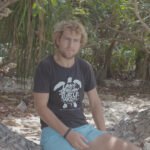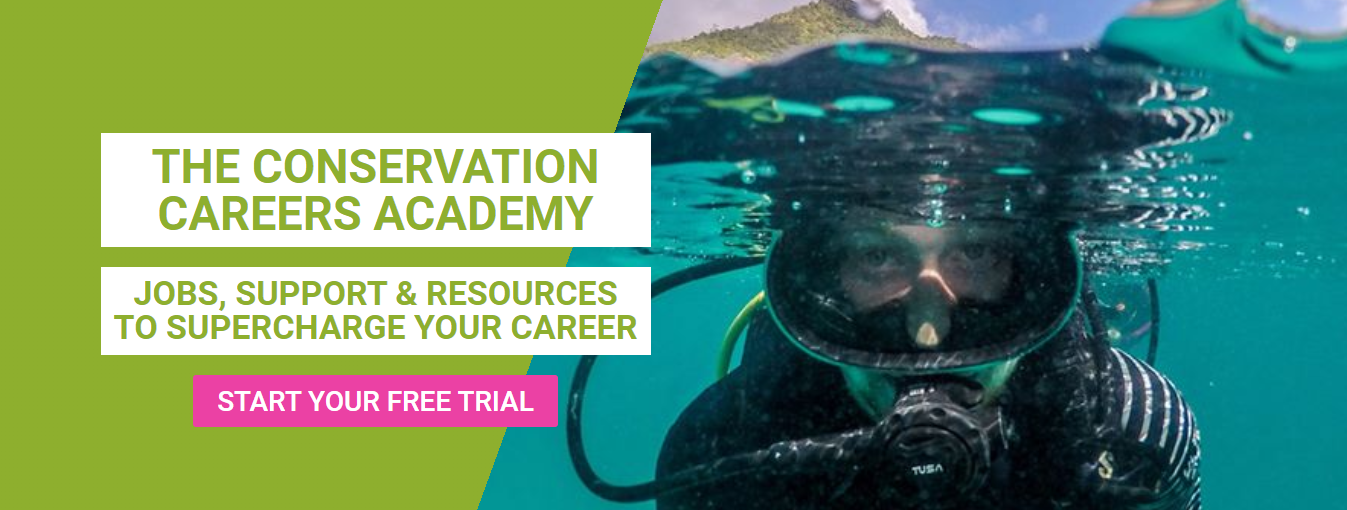
Underwater meadows of hope – In discussion with Project Seagrass CEO, Leanne Cullen-Unsworth
“I think empowerment to protect what we have, often comes from celebrating what we’ve got”.
Leanne Cullen-Unsworth is the CEO of Project Seagrass, an amazing charity working in the UK and across the globe to celebrate, protect and restore ecologically important seagrass meadows.
This incredibly valuable ecosystem was often overlooked in planning and management policies, Project Seagrass has helped change that. Leanne takes us through how the charity was formed, the work they are doing and how everybody can get involved to help save the world’s seagrass.
“Where you’ve got healthy, dense seagrass meadows in the UK, they are insanely beautiful. You can spend hours snorkelling up and down, and you’ll see incredible diversity. Baby fish, pipefish, invertebrates and maybe even seahorses. It’s just an incredibly calming and wonderful environment to be in.”
Seagrass meadows are clearly wonderful places to explore, but it was their ecological importance and lack of human recognition of that importance that lead to the creation of Project Seagrass.

Dugong feeding on seagrass. Credit: Anett Szaszi / Ocean Image Bank.
What lead to the creation of Project Seagrass?
“Myself and one of the Project Seagrass co-founders, Richard Unsworth, were doing our PHD research in Indonesia back in the early 2000s. Richard was looking at habitat connectivity and I was looking at marine resource use patterns. I was going in with the assumption that people were highly dependent or reliant on coral reefs and mangroves.”
“We had both completely overlooked the importance of seagrass, and at that time, so had most of the scientific/conservation community. Only a handful of scientists were already working on seagrass and trying to raise its profile back then”
“Through my own research I realized that people were not only heavily utilising seagrass, but some people were absolutely dependent on it, some families completely for their daily protein needs. This ignited a recognition of the ecosystem service value of seagrass.”
Seagrasses are flowering plants that live in shallow sheltered areas along our coast. These sensitive plants are different from seaweed and form bright green leaves. These leaves can form large, dense meadows under the sea. It’s these meadows that host some breathtaking ecosystem services.
- Carbon Sequestration – Seagrasses occupy 0.1% of the sea floor yet are responsible for 11% of the organic carbon buried in the ocean. They can be more efficient than tropical forests when it comes to carbon sequestration.
- Fisheries – Seagrass meadows support fisheries across their range, from providing fishing grounds directly to supplying nursery habitat for 20% of the world’s largest commercial fisheries.
- Poverty Alleviation – Seagrass meadows support communities and livelihoods. They provide vital nutrition for close to 3 billion people, and 50% of animal protein to 400 million people.
- Biodiversity – Seagrass meadows provide food and habitat for 1,000’s of species such as fish, shellfish, seahorses, manatees, and sea turtles.

Dr Leanne Cullen-Unsworth working with the project. Credit: Project Seagrass.
“Richard had two masters students, at Swansea University, Benjamin Jones and Richard Lilly, who were both also really pulled into this world of seagrass. It was actually Ben’s idea to set up an organization called “Project Seagrass” to try and raise awareness of the importance of seagrass to people and the planet.”
Seagrass meadows are a global resource, not restricted to the tropics, we even have them in the UK. There are seagrass meadows on every continent except from Antarctica. Seagrass is nearly everywhere, but across its range, it’s in trouble.
“In the UK alone, we have lost up to 92% of our seagrass meadows over the past 100 years, with maybe 50% of that in just the last 40 years. This loss coincided with a widespread seagrass loss across Europe in the 1930s that was linked to a wasting disease. But it also coincides with industrialisation and declines in water quality across the UK.”
“Thankfully, as water quality is slowly improving.” Unfortunately, incredibly slowly in some parts of the UK. “We are in a good position where we can start reintroducing seagrass back to areas of our coasts where other environmental conditions are right.”
“Restoration is necessary at this stage, but we really need to protect what we already have. We have these incredible meadows that we need to cling on to, otherwise we will lose them too and restoration of a meadow takes years. It is a balance between protection and restoration, otherwise you will still end up with net loss.”

Main image: An Indonesian fisherman in a seagrass meadow. Credit: Ben Jones / Ocean Image Bank.
The work of Project Seagrass
Project seagrass sets out to not only raise awareness about these incredible ecosystems, but to protect and restore them! But what are Project Seagrass doing on the ground?
“At Project Seagrass we work across three pillars of community, research, and action. All the work we do through our different programs, is founded on the best available science that we currently have access to. This is either science that we are doing or drawing from elsewhere. Others are also delivering some great science for seagrass.”
A great example of the cutting-edge science that Project Seagrass is doing comes from the Solent, South England. “We are looking at the best methods for restoration as this science is quite new. We focus on improving knowledge of the methods that we use and on improving germination rates, seed storage and investigating a mechanisation process to facilitate the scaling up of restoration.”
Having this scientific backing to all the work they do allows Project Seagrass to be ambitious with their projects in terms of protection and restoration. However, the huge task at hand cannot be completed without working with coastal communities, something that forms a large part of the work Project Seagrass are doing.
“We’ve got big projects in North Wales and the Firth of Forth, they’re very much working with local communities, collaborating on restoration design and delivery as well as outreach, these projects also rely heavily on volunteers to help collect seeds and support the planting work.”
“We take a different approach with our international work where we aim to support organisations on the ground with technical advice for seagrass assessment or protection. For example, in Indonesia we have supported an awesome program that roughly translated to ‘Managing the sea from the land’.”
“Communities and a local NGO got together to discuss the major impacts on seagrass and to target solutions. They ended up creating a reforestation program along the rivers to minimize run-off entering the ocean and damaging the seagrass. The amazing thing was that the community were able to manage this and they planted trees that would give them non timber products like food or materials that they can profit from sustainably.”
“Seagrass is a great example of a habitat where it’s really demonstrable that people and nature are compatible. There is this perception that because these meadows often grow in sheltered bays, that are also good for boat mooring, that there will be conflict, but you can moor in habitat sensitive ways and even fish sustainably in seagrass meadows.”
“Giving communities a voice, and actually listening, allows us and our partners to come up with achievable solutions that could be scaled up.”
Opportunities to get involved
Project Seagrass is conducting and supporting many incredible projects around the world including right here in the UK. There are some awesome ways in which anybody can get involved in the work they are doing.
“We have a volunteers Facebook page, where people can sign up, or people could drop us an email to volunteers@projectseagrass.org and that’ll be picked up by our volunteer coordinator. And then we have various opportunities at the different sites and at our nursery and HQ at different times of the year.”
“We call for volunteers sometimes for the seed processing, to help that and get rid of all the other organic matter from around the seeds. And then also some of the work getting the seeds back into the ground.”

Seagrass Spotter Ad.
“Outside of that we’ve also got an app called ‘Seagrass Spotter’, which is very relevant because one of the big challenges for seagrass globally is that it’s poorly mapped. One of the reasons for that is that seagrass meadows are very widespread, but patchy across their range. Our app allows people to go and take a geo referenced photograph of seagrass and upload as much data as you want. That then gets linked to the Global Map. All this data is open access and allows us and others to better target our work. All the data including the map are freely available online, meaning people can use it to find seagrass themselves and explore, whilst supporting the science!”
Apps like Seagrass Spotter are an incredible example of the power of citizen science. Members of the public can get out into nature and with a little help on species ID, can not only connect with amazing habitats and species, but actually support the work of research and conservation organisations like Project Seagrass. Getting involved in community action groups and activities are a great way to start a career in conservation.
“Experience through volunteering on conservation projects or with community groups, I think is a super positive thing. One thing we look for is that experience of having worked with communities or other stakeholders on any kind of conservation project.”

Aerial view of community seagrass. Credit: Ben Jones / Ocean Image Bank.
As well as volunteering, Leanne tells us the importance of being able to communicate science. “Communication is key. If people could practice their science communication skills, that is one of the bridges that’s really needed.”
“Because for us, our USP is that we’re very connected to the current science, and we use that science to inform our work. But as a scientist, it’s not always very easy to communicate the science that’s been done into plain English in a way that anyone can pick up and understand.”
“So, for career conservationists, building those skills, writing blogs, creating social media posts, doing those things that get you practice. I think that’s a really good skill that employers are looking for now.”
“We need a collective voice, we need to be talking about protection as well as restoration, and we need to be acting now. Something that Sir David Attenborough said recently was along the lines of we’re not yet out of time but we need to act now. We need the knowledge to care and to show that we care, we need voices, we need people to be very clear that they want change. I think if people keep coming together on these topics, we can achieve great things.”
This year is a big year for the charity as they celebrate their 10 year anniversary! They are looking forward to the next 10 years with a relaunch of a new and improved Seagrass Spotter app as well as the release of their 10 year strategy towards saving the world’s seagrass between 2023-2032.
Make sure to head to their website and follow them on Facebook and Instagram @projectseagrass to keep track of this great work and get involved.
Author Profile | Jordan Gledhill
 A conservation biologist from the UK, Jordan has worked with and supported conservation projects around the world through One Planet Conservation Awareness. A platform to support, empower and celebrate small NGOs working in conservation. Follow them on Facebook, LinkedIn and Instagram.
A conservation biologist from the UK, Jordan has worked with and supported conservation projects around the world through One Planet Conservation Awareness. A platform to support, empower and celebrate small NGOs working in conservation. Follow them on Facebook, LinkedIn and Instagram.
Interviews, Organisational Manager, Marine Conservation Jobs

